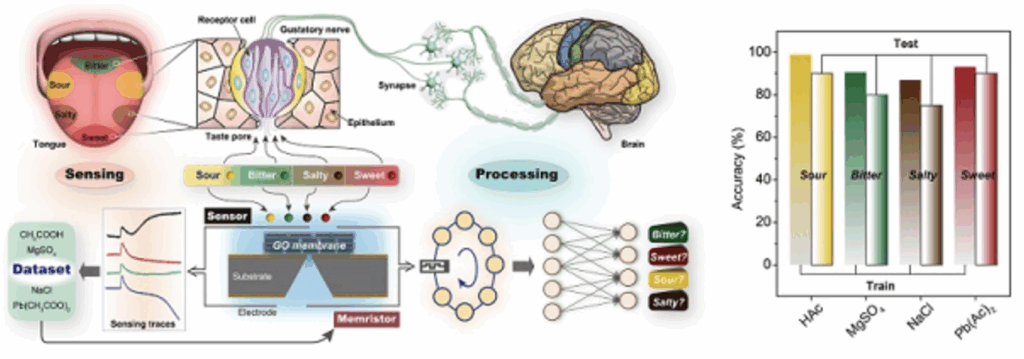https://www.pnas.org/doi/10.1073/pnas.2413060122
https://www.cas.cn/syky/202507/t20250715_5076403.shtml
A team at the CAS National Center for Nanoscience and Technology has built an intelligent taste system based on ionic neuromorphic devices.
Bionic “brain-like computing” is one of the core research directions in the field of artificial intelligence, and the integrated system of sensing, storage and computing that simulates human senses is one of the important research topics in this direction. Compared with visual and tactile perception, the bionic taste sensing, storage and computing integrated system will play a unique role in environmental monitoring, food safety, health monitoring, disease diagnosis and taste reconstruction. Unlike vision and touch, taste perception involves the exchange of chemical (biological) substances, and the operation of the device often requires a liquid physiological environment and has a more complex process. Therefore, it is extremely challenging to achieve bionic taste sensing, storage and computing integration.
Based on stacked graphene oxide films, the team has developed a new nano-ionic device that integrates sensing and computing functions and can work in the aqueous phase. Ion dynamics characterization and finite element theoretical simulation studies show that the interfacial adsorption-desorption process in graphene oxide sheets can significantly retard the migration speed of ions, thereby giving the device ion sensing and memristive properties.
The study used the sensing function of this device to build a chemical sample library of various flavors, and based on its neuromorphic computing function, built a reserve pool computing network to simulate an artificial taste system. The system can accurately identify the four basic flavors of sour, bitter, salty, and sweet, as well as complex flavors such as coffee and cola.


